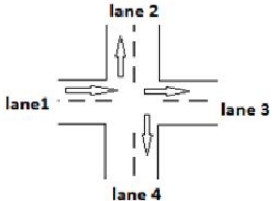
Cataract Detection System Using Convolutional Neural Network
₹6,000.00
Cataract Detection System Using Deep Convolutional Neural Network
100 in stock
Description
ABSTRACT
Cataract are the highest cause of blindness that there are 32.4 million people experiencing blindness and as many as 191 million people experiencing visual disabilities in 2010 in the world. On the other hand, the longer a patient suffers from cataracts or late treatment. The development of cataract identification using a traditional algorithm based on feature representation is highly dependent on the classification process carried out by an eye specialist so that the method is prone to misclassification of a person detected or not. However, at this time there is a deep learning, convolutional neural network (CNN) which is used for pattern recognition which can help automate image classification. This research was conducted to increase the accuracy value and minimize data loss in the process of cataract identification by performing an experience namely the manipulation process was carried out by changing epochs. The results of this study indicate that the addition of epochs affects accuracy and loss data from CNN. By comparing variety of epoch values it can be ignored that the higher the age values used, the higher the value of the model. In this study, using the epoch 50 value reached the highest value with a value of 95%. Based on the model that has been made it has also been successful to receive images according to the specified class. After testing accurately, 10 images achieved an average accuracy of 88%.
INTRODUCTION
Cataract is defined as a clouding of the lens of the eye that causes visual defects. Cataract is the highest cause of blindness . Based on research by states that there are 32.4 million people experiencing blindness and as many as 191 million people experiencing visual disabilities in 2010 in the world, of which 33.4% of all cases of blindness and 18.4% of cases of vision defects caused by cataracts. Besides, the number of people who have lost their sight due to cataracts worldwide is likely to reach 40 million. On the other hand, the longer a patient suffers from cataracts or late treatment, the more severe the damage will be to a cataract sufferer’s vision. An ophthalmologist can diagnose cataracts by looking at the degree of brightness from the fundus photo. The development of cataract identification using a traditional algorithm based on feature representation is highly dependent on the classification process carried out by an eye specialist so that the method is prone to misclassification of a person detected or not. However, at this time there is a new method known as deep learning, in particular the convolutional neural network (CNN) which is used for pattern recognition (including images) which can help automate image classification, in this case, the retinal fundus data image . Among several methods of machine learning, the convolutional neural network (CNN) is a very popular method because of its ability to solve problems in computer vision domains, namely among others in segmentation, detection systems, classification systems, and other computer vision and video analysis applications. It is an improved version of multilayer perceptron or other networks . A CNN consists of an input and an output layer, as well as multiple hidden layers. The hidden layers of a CNN typically consist of convolutional layers, RELU layer i.e. activation function, pooling layers, fully connected layers, and normalization layers . On the other hand, nowadays, evolutionary computing is increasingly being used to solve a problem with an optimization approach . One case is the use of evolutionary computing to determine the optimal parameters of a function. When associated with CNN, the determination of CNN architecture is closely related to the selection of several parameters, including the number and size of the kernel, the number and type of layers, and the type of activation function.
PROPOSED METHOD
This paper presents a web-based Computer Aided Diagnostic for cataract detection system using Convolutional Neural Network that can be used by any nonprofessional outside the clinic environment. The systems model trained on a data set of 100 eye images using transfer learning which were retrieved from google image search results of “normal human eyes” and “human eye cataract”. It uses the Convolutional Neural Network classifier to train a new model. The new model gained the ability to classify eye images into “Normal” and “Cataractious”. The model trained during the ImageNet image classification using deep convolutional neural network.
DEMO VIDEO
CONCLUSION
Based on the research that has been done, it has succeeded in making a CNN model that will be used to test the image. By comparing a variety of epoch values it can be ignored that the higher the age values used, the higher the value of the model. In this study, using the epoch 50 value reached the highest value with a value of 95%. Not only does the accuracy of the model get high scores but also the examiner process shows accurate results using the CNN model which uses a total of 50 times. Based on the model that has been made it has also been successful to receive images according to the specified class. After testing accurately, 10 images achieved an average accuracy of 88%.
Additional information
| Weight | 1.000000 kg |
|---|




Reviews
There are no reviews yet.